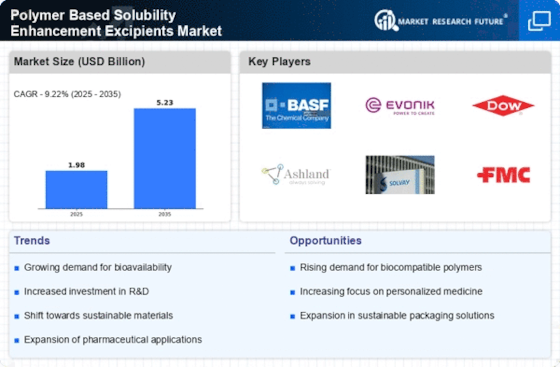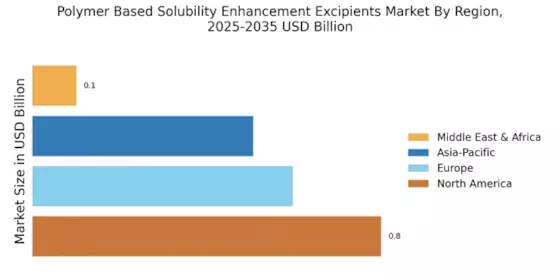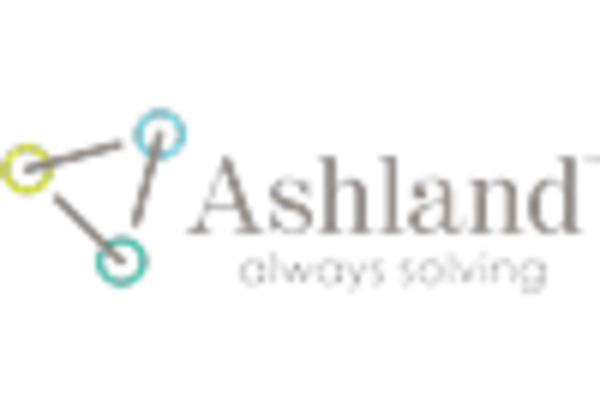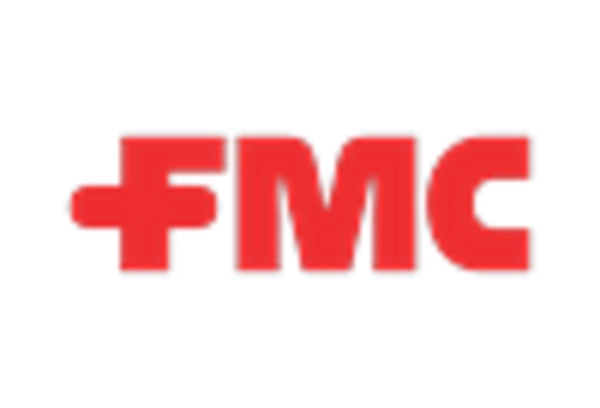Advancements in Polymer Chemistry
The Polymer Based Solubility Enhancement Excipients Market is benefiting from significant advancements in polymer chemistry. Innovations in polymer synthesis and modification techniques have led to the development of novel excipients that enhance solubility and stability of active pharmaceutical ingredients. These advancements enable the creation of polymers with tailored properties, such as improved hydrophilicity and controlled release characteristics. As a result, pharmaceutical formulators are increasingly adopting these advanced polymers to address solubility challenges. The market for polymer-based excipients is projected to grow at a steady pace, with estimates suggesting a growth rate of around 6% annually. This growth is indicative of the ongoing research and development efforts aimed at optimizing polymer formulations for enhanced solubility. Thus, the Polymer Based Solubility Enhancement Excipients Market stands to gain from these technological innovations.
Rising Demand for Biopharmaceuticals
The Polymer Based Solubility Enhancement Excipients Market is experiencing a notable surge in demand due to the increasing prevalence of biopharmaceuticals. These complex molecules often exhibit poor solubility, which can hinder their therapeutic efficacy. As a result, the need for effective solubility enhancement solutions has become paramount. According to recent estimates, the biopharmaceutical sector is projected to grow at a compound annual growth rate of over 8%, thereby driving the demand for polymer-based excipients. This growth is likely to be fueled by advancements in drug formulation technologies that leverage polymers to improve solubility and bioavailability. Consequently, the Polymer Based Solubility Enhancement Excipients Market is positioned to benefit significantly from this trend, as pharmaceutical companies seek innovative solutions to enhance the performance of their biopharmaceutical products.
Growing Investment in Pharmaceutical R&D
The Polymer Based Solubility Enhancement Excipients Market is likely to experience growth driven by increasing investments in pharmaceutical research and development. As companies strive to innovate and bring new drugs to market, the need for effective solubility enhancement solutions becomes critical. Recent data indicates that global pharmaceutical R&D spending is projected to exceed 200 billion by 2025, reflecting a strong commitment to developing novel therapies. This investment trend is expected to create a favorable environment for the Polymer Based Solubility Enhancement Excipients Market, as researchers seek to formulate drugs with improved solubility profiles. Furthermore, the emphasis on developing complex molecules, such as biologics, necessitates the use of advanced excipients, thereby enhancing the market's growth potential.
Increasing Focus on Drug Delivery Systems
The Polymer Based Solubility Enhancement Excipients Market is poised for growth as the focus on advanced drug delivery systems intensifies. These systems aim to optimize the therapeutic effects of drugs by improving their solubility and bioavailability. With the rise of targeted therapies and personalized medicine, the demand for excipients that can facilitate effective drug delivery is escalating. Market data suggests that the drug delivery market is expected to reach a valuation of approximately 2 trillion by 2025, indicating a robust growth trajectory. This trend underscores the importance of polymer-based solubility enhancement excipients, which play a crucial role in formulating effective drug delivery systems. As pharmaceutical companies increasingly prioritize innovative delivery mechanisms, the Polymer Based Solubility Enhancement Excipients Market is likely to witness substantial growth opportunities.
Regulatory Support for Innovative Formulations
The Polymer Based Solubility Enhancement Excipients Market is supported by an evolving regulatory landscape that encourages the development of innovative drug formulations. Regulatory agencies are increasingly recognizing the importance of solubility enhancement in improving drug efficacy and patient outcomes. This support is evident in the streamlined approval processes for novel excipients and formulations that demonstrate enhanced solubility characteristics. As regulatory frameworks adapt to accommodate advancements in polymer technology, pharmaceutical companies are more inclined to invest in research and development of polymer-based excipients. This trend is likely to foster innovation within the Polymer Based Solubility Enhancement Excipients Market, as companies seek to leverage regulatory support to bring new and effective solubility enhancement solutions to market.


















Leave a Comment